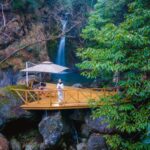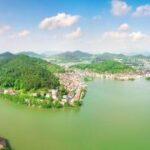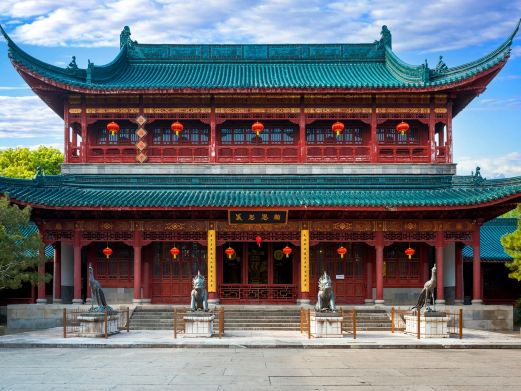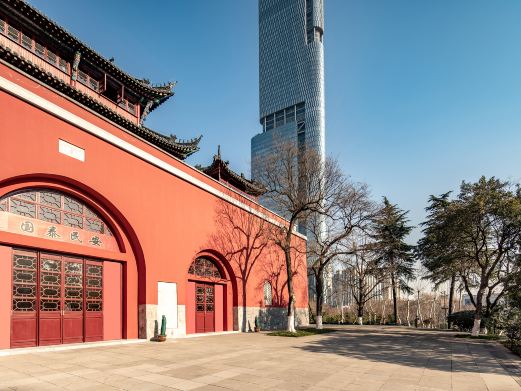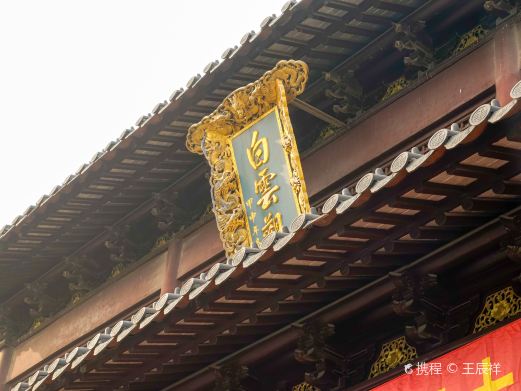The Nanjing Yangtze River Bridge is an iconic structure in Nanjing City, spanning across the Yangtze River with its southern end in Gulou District and the northern end in Pukou District. Constructed in the 1960s, it has significantly eased transportation between the north and south banks since its opening in 1968. Prior to the bridge’s construction, travelers relied on ferries to cross the river, and trains had to use wheel ferries.
As the third bridge crossing the Yangtze River after Wuhan Yangtze River Bridge and Chongqing Baishaduo Yangtze River Bridge, the Nanjing Yangtze River Bridge is also the first bridge over the Yangtze River to be entirely built by the Chinese, earning the nickname ‘Bridge of Pride’. The bridge features approach bridges on both the south and north sides, with the main bridge measuring 1576 meters in length and consisting of two levels. The upper level is a highway bridge, capable of accommodating four large vehicles side by side, with more than 2 meters wide sidewalks on each side. The lower level is a railway bridge, with tracks for two trains to pass each other simultaneously, and the crisscrossing steel bars form the railings of the railway bridge.
At the bridge’s head, there are four bridgehead fortresses on each side, totaling eight. Each side has two large bridgehead fortresses and two small ones. The large bridgehead fortresses stand 70 meters high, topped with a ‘Three Red Flags’ statue. The small bridgehead fortresses are over 10 meters high, with the part protruding from the highway bridge surface featuring ‘Workers, Peasants, Soldiers, Students, and Merchants’ statues.
To access the bridge by car or train, one can appreciate the grandeur of the bridge while crossing. For pedestrians, there are two methods to ascend the bridge. One can walk up the approach bridge from either the south or the north side; the southern point is near the Daqiao Hotel on Daqiao South Road, and the northern point is near the Hai De Bei An City. Although the approach bridge is quite long, walking it allows for free access to the bridge. Alternatively, for a fee of 15 yuan, one can enter the bridge park (Nanpu Park) under the bridge on the south bank, take the bridgehead fortress elevator to the highway bridge level, and even ascend to the observation deck of the bridgehead fortress. However, only the southern bridgehead fortress allows access to the bridge; the northern one is closed.
A walk from one bridgehead fortress to the other takes approximately 30 minutes to an hour, offering views of about 200 reliefs depicting the country’s landscapes and achievements at the time, embedded on the railings of the highway bridge. Feeling the rumble of trains passing beneath, watching the bustling traffic on the bridge, and observing the ships on the Yangtze River below is an experience in itself. On a clear day, one can gaze south to see the cityscape of Nanjing, including Lion Mountain, the Yujiang Tower, the Zifeng Building, and the Jiangsu Broadcasting and Television Tower (Zijin Tower). The sunrise and sunset over the Yangtze River are particularly magnificent. At night, thousands of streetlights on the bridge light up like a string of night pearls along the river. However, for those wishing to watch the sunrise in the morning or the night view, if the bridgehead fortress elevator is not operational, one must walk up the approach bridge or simply admire the view from beneath the bridge, which is also quite impressive.
Opening hours: Open all day throughout the year. The specific business status is subject to the opening situation on the day.
Must-see tips: 1. The Nanjing Yangtze River Bridge prohibits the passage of buses with 10 seats (including) or more throughout the day, except for buses and self-provided commuter shuttle buses (including chartered commuter vehicles) with Nanjing license plates of enterprises and institutions that have obtained passes. After the ban, vehicles can detour through the Nanjing Second Yangtze River Bridge, Third Yangtze River Bridge and other bridges. 2. There are many vehicles passing by on both sides of the bridge. Be careful when walking on the bridge.
Nanjing Yangtze River Bridge
The Nanjing Yangtze River Bridge is an iconic structure in Nanjing City, spanning across the Yangtze[...]


